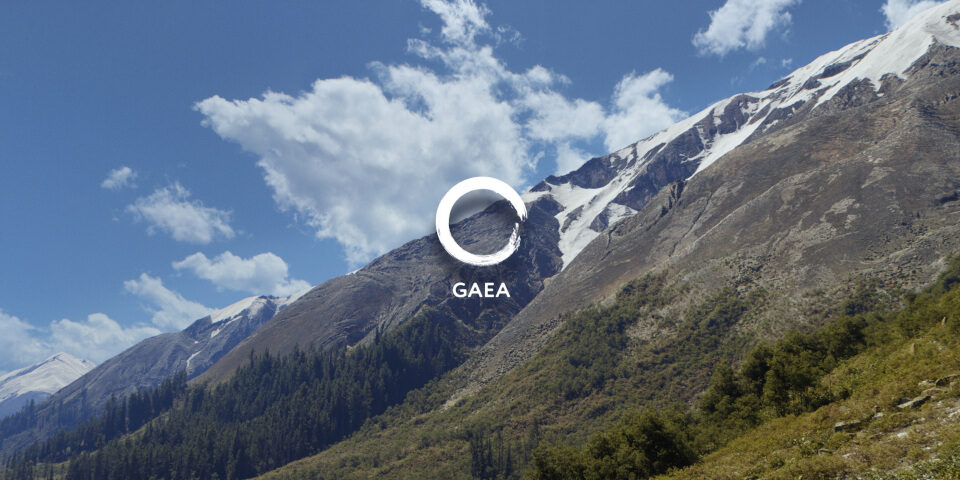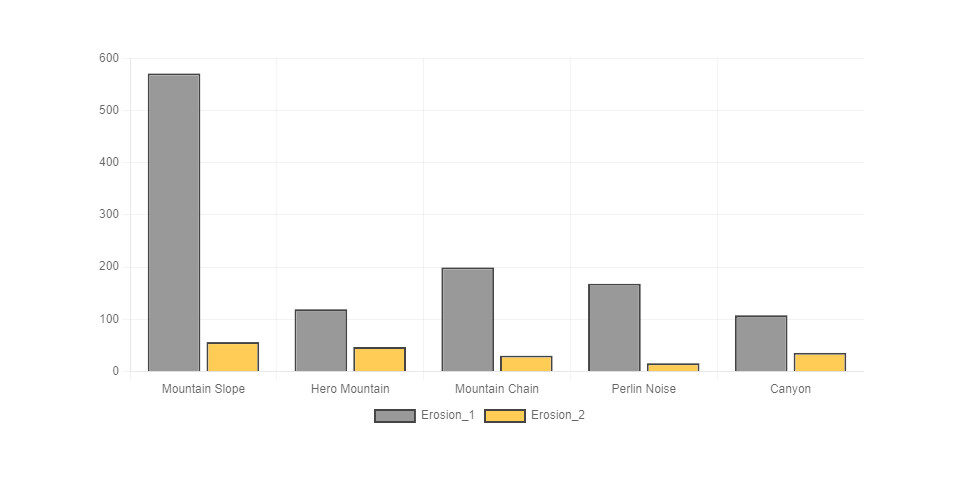QuadSpinner unveils Gaea 2.0

QuadSpinner has unveiled Gaea 2.0, a major update to its next-gen terrain design tool.
The release, which will become available to pre-order in November, rewrites the software core to improve performance by “several magnitudes”, and reworks the procedural erosion system.
There is also an interesting new multi-scale workflow for precise control of terrain, support for multi-user editing of very large worlds in ‘God Mode’, and a new Unreal Engine 5 bridge.
Powerful procedural terrain generation plus artist-friendly direct sculpting
First released in 2019, Gaea provides an artist-centric approach to terrain generation for games, combining powerful procedural controls with a range of direct input methods.
As well as by creating and editing a conventional scene graph, users can control terrain forms through a Photoshop-style layer system or by direct sculpting.
The software includes a procedural erosion system capable of mimicking snow, scree and sediment deposition, which can even be used to ‘sculpt’ fine details into a terrain.
Once generated, terrains can be exported as meshes, point clouds or height maps, with the option to generate LODs or variants via a built-in terrain mutation system.
The software is used for both game development and visual effects work, with testimonials on QuadSpinner’s website ranging from MattePaint.com to Respawn Entertainment.
Rewritten core improves performance by orders of magnitude
According to QuadSpinner, Gaea 2 represents a major rewrite of the software’s core that will improve overall performance by “several magnitudes”.
As well as optimising the code, some processes have been GPU-enabled, with CPU fallbacks.
The node graph has been redesigned to reduce the the learning curve for new users, with new node modifiers to make it possible to generate terrain with lighter graphs.
Users will also be able to create their own custom tools with macros and scripting.
New ‘primitives + landscapes + surfaces’ workflow for multi-scale design of terrain
The release also rethinks terrain design workflow to “address the biggest problems artists face in achieving control over procedural shapes”.
The ‘primitive + lookdev’ workflow from Gaea 1 has been superseded with what QuadSpinner describes as ‘primitive + landscapes + surfaces’.
Gaea 2.0’s new Surface nodes apply smaller-scale erosion effects to parts of a terrain after it has been generated, making terrain design a multi-stage, multi-scale process.
God Mode supports simultaneous multi-user editing of large game worlds
This multi-scale design philosophy extends to very large environments, with a new God Mode making it possible to modify parts of worlds and have their surroundings react to the changes.
According to QuadSpinner, the new workflow makes it possible to manage biomes within a world independently, while still having them share procedural characteristics.
Artists work on an infinite base terrain using a multi-resolution workflow, with the option to export terrain as hybrid-resolution meshes “friendly” to Nanite, Unreal Engine 5’s virtual geometry system.
For teams, the system supports simultaneous multi-user editing of different parts of a world, with source control for the individual inputs.

New Erosion 2 algorithm makes erosion effects ‘up to 10x’ faster
Other new features include the Erosion 2 algorithm, described as being capable of “shapes previously unavailable” in Gaea, and as preserving the original character of the terrain better.
It is provided in parallel to the existing Erosion 1 algorithm, although it’s much faster, with speed boosts of “up to 10x”.
You can see QuadSpinner’s performance comparisions for different types of terrain above.
New bridge to Unreal Engine 5
In addition, Gaea 2.0 wil come with a “fully fledged” bridge to Unreal Engine 5.
As well as simply exporting terrain to the game engine – which can be done as a height field or 3D mesh – and having the the bridge set up materials, it will be possible to edit terrain in UE5.
Users can select properties from the Gaea project to remain editable inside Unreal Engine, or use a new set of Unreal Engine Gaea Terrain Modifiers to make additional changes.
Not backwards-compatible, but can be run in parallel with Gaea 1.x
Gaea 2 will not be backwards-compatible, but exiting users get a “big discount” on upgrades, and can continue to use their Gaea 1 licence in parallel to Gaea 2, even after upgrading.
Price, system requirements and release date
Gaea 2.0 will be a Windows-only application. It is due for release in “late Q1 2024′, with pre-orders due to begin on 24 November 2023. The price remains unchanged from Gaea 1.x.
There is a free Community Edition, which is licensed for commercial use and provides access to most of the key tools, but which caps export resolution at 1K.
The Indie edition, which caps resolution at 4K, costs $99; the Professional and Enterprise editions, which provide 8K resolution plus a range of advanced features, cost $199 and $299.
Read an overview of the new features in Gaea 2.0 on QuadSpinner’s website
Have your say on this story by following CG Channel on Facebook, Instagram and X (formerly Twitter). As well as being able to comment on stories, followers of our social media accounts can see videos we don’t post on the site itself, including making-ofs for the latest VFX movies, animations, games cinematics and motion graphics projects.
